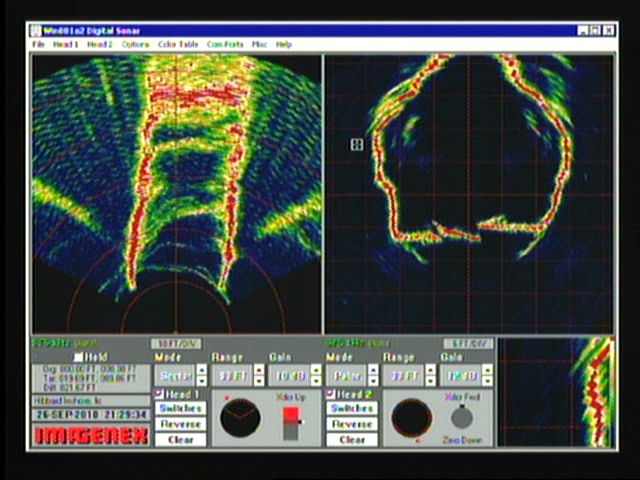Long Head Race Tunnel Inspection with Mechanical Scanning and Multibeam Sonar in Low Visibility
Hibbard Inshore traveled to Central America to inspect a 9.5 meter diameter, 4.8 kilometer long, fully flooded tunnel in zero/limited visibility conditions. The tunnel had been built using several different types of material, and the inspection equipment was selected to be able to address all of these construction methods: rock cut, concrete lined and steel lined tunnel sections. To keep costs down and allow for stationary sonar measurements, the tunnel’s flow was stopped for three twelve hour outage periods to perform this imaging sonar heads and a BlueView electronic scanning head. One Imagenex sonar head took cross sections while the other was forward looking for navigation and feature detection. The BlueView sonar was also forward looking but scanned at a much faster rate in order to expedite the inspection process and still detect major features while moving.

The inspection was performed in three separate dives revealing a number of blockages in several parts of the tunnel. Each dive was performed until there was too much debris to safely continue or to the terminus of the umbilical. A number of voids on the crown were identified and debris was detected throughout the tunnel utilizing the BlueView P900. During the inspection the umbilical payout was measured and once features were identified with the BlueView unit, they were cataloged with their location and the vehicle was able to quickly swim to them to try to get video confirmation despite very low visibility in the water. The inspection allowed the customer and their engineers to plan for the remediation of the issues found.

